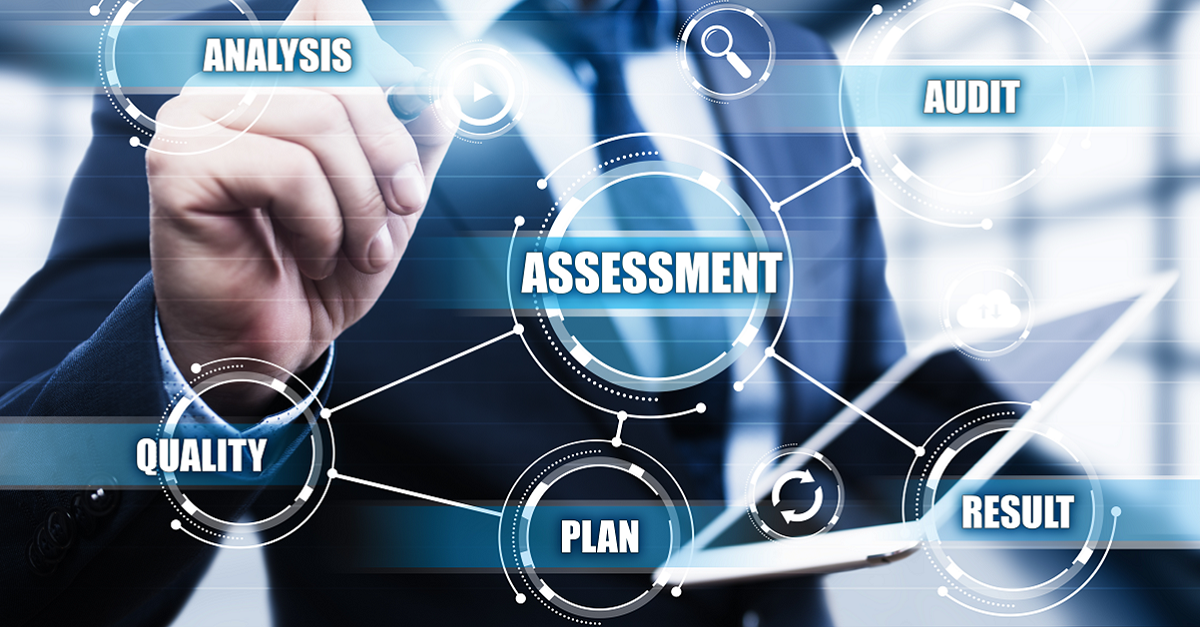When conducting an assessment of the organization, two questions that leaders should be asking are:
- Do we really know how well our organization is performing?
- Is everyone on the same page with regards to organizational performance and priorities for improvement?
For more than two decades, organizations have utilized the Collaborative Assessment process to help answer these two key questions.
So you may be wondering, “What is a Collaborative Assessment?” Good question!
In short, it is an event-focused approach to efficiently complete an assessment to target criteria and/or questions in a short period of time. The approach uses the input from subject matter experts in a focus group type setting, with assistance from criteria and assessment experts. The participants collaborate to identify the vital few strengths and opportunities for improvement within the organization. The opportunities for improvement are then prioritized and converted into action plans for improving organizational performance.
The collaborative assessment is a proven method that has been used by multiple organizations in multiple industries worldwide. It is not a new concept; this author has been successfully utilizing this approach for more than 15 years. While much prior usage of the Collaborative Assessment process has been applied to assessments using the Baldrige Excellence framework, the approach could be used for almost any type of business or organizational assessment, provided the purpose is for understanding actual performance and opportunities, and not as part of a judging or certification process. The collaborative assessment process can be subject to participant bias if there is a performance goal, such as certification, to be determined as part of the assessment outcome.
Potential applications of the Collaborative Assessment include:
- Process Improvement Opportunity
- Baldrige Excellence Framework
- Process Maturity
- ISO 9000
- Joint Commission
For organizations using the assessment primarily as an input for planning and improvement, the Collaborative Assessment provides a solution to many of the inherent disadvantages that exist with traditional assessment approaches.
Typical Assessment Turnoffs
- Cycle time too long
- Too much time/resources required
- Untimely for business calendar
- Wasted time
- Awards orientation versus improved results
- An add-on event versus part of the job
- Lack of follow-through on feedback
- Activities too score oriented
- Lack of senior management buy-in
- Assessment criteria too complex
Advantages of a Collaborative Assessment
- Speed
- Minimal preparation
- Inclusiveness
- Instant feedback
- Focus on improvement
- Consensus focus
Conducting a Collaborative Assessment
Here are some of the features for conducting an effective collaborative assessment include the following:
Focused Event – Depending upon the size of the organization and assessment scope, a full assessment can typically be completed in 3 to 5 days. Preparation for the event should include planning the event logistics and scheduling of the subject matter experts. Other activities that can be completed in advance include gathering existing documentation, data and reports that are relevant to the assessment. While it is important to do a good job of planning, excessive planning and front-end work can be non-value adding and negate the benefits of the Collaborative Assessment. On the other hand, it is important that the necessary people are available for the full-time they are scheduled during the collaboration efforts. This will provide for an accurate and efficient assessment for the organization.
Experts and SMEs – Two key groups of people are necessary for a Collaborative Assessment –people with expertise in the assessment criteria and conducting assessments, and people who are knowledgeable about the organizational processes and performance. There are several sources for assessment experts including internal resources, paid consultants and external volunteers. The subject matter experts (SMEs) can include all levels and functions of the organization.
Focus group format – Assessment information is gathered in a focus group setting. For each section of the assessment criteria, a team of SMEs is scheduled to respond to the assessment questions. The assessment experts facilitate the discussion by helping the SMEs to understanding the intent of the questions and rating criteria, when relevant, which provide a basis for “how well” the organization is performing. The assessment experts will offer their own insights based upon participant responses and knowledge of the performance excellence criteria
Brainstorm – During each focus group, it is best to begin the discussion by conducting a brainstorming session. The facilitator begins the conversation by explaining the specific assessment question(s) that the group is addressing. A person should be assigned to document responses in real-time. Responses are recorded on two separate lists – one for strengths and another for opportunities for improvement (OFIs). At first, the facilitator should simply accept responses like any other brainstorming session. The facilitator may ask clarifying questions, but must refrain from judging. After the group has provided input, then the facilitator should invite discussion regarding the information collected. This is the opportunity for the facilitator to transition to a teaching/consulting mode to help the participants understanding how well the organization responds to the criteria. The facilitator will highlight some of the key strengths and OFIs from the responses, and help the group to understand where information may be missing or off base.
Consensus around strengths and opportunities – At the end of each focus group session, the group will identify the most important strengths and OFIs from the discussion. This can be done using several methods. Multi-voting techniques or rating ballots are effective approaches for getting input from a group of people very quickly.
Affinitize key themes – Typically, a collaborative assessment will gather much information, including a long list of strengths and OFIs. This information needs to be synthesized, by separating the useful many from the vital few. One technique that has been proven effective is the process of affinitizing OFIs so that they are grouped into similar themes. The output of this exercise will provide a summary of the most important issues from the assessment.
Action Planning – The final step is to prioritize the opportunities and develop action plans to close the gap between current performance and desired performance. One approach is to narrow the synthesized OFIs from the prior step to create a top twenty list, effectively prioritizing the data so the most significant opportunities are the most apparent. The selection of the top priorities should include input from the participants and the facilitators. Senior leaders should use this input to determine the most important OFI for which the organization will take immediate action. Action plans should be created with assignments and milestones for follow-up and completion. Ideally, these action plans become integrated into the organization’s annual plans and performance management systems.
Collaborative Assessment Advantages
For organizations that intend conduct assessments to support planning and continuous improvement, the Collaborative Assessment process can be described as:
- Faster – most of the work is completed in a one-week period.
- Less Costly – because the assessment requires little preparation and is completed so quickly, it takes less labor to complete when compared to more traditional application assessments.
- More Efficient – the collaborative assessment facilitates organizational learning about the criteria and performance, while building consensus and buy-in for the things that need to change.
The ultimate purpose of collaborative assessments is to help the organization to achieve the highest level of performance possible in the eyes of their customers and key stakeholders.
Are you ready to conduct a collaborative assessment? Let us know and we’ll help you get started!
About Er Ralston
 Er Ralston is an accomplished coach, trainer, and advisor, specializing in business process excellence, strategic and tactical business planning, Lean management systems, Six Sigma improvement methodology, and the Malcolm Baldrige National Quality Award criteria for performance excellence. Er brings more than 30 years of experience in numerous operations and quality leadership interventions. He is a Lean expert and certified Six Sigma Master Black Belt.
Er Ralston is an accomplished coach, trainer, and advisor, specializing in business process excellence, strategic and tactical business planning, Lean management systems, Six Sigma improvement methodology, and the Malcolm Baldrige National Quality Award criteria for performance excellence. Er brings more than 30 years of experience in numerous operations and quality leadership interventions. He is a Lean expert and certified Six Sigma Master Black Belt.






